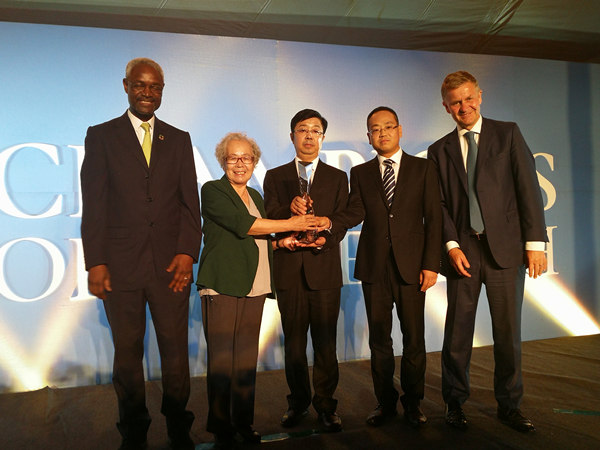

Before last year's Shanghai World Expo, Beijing Zoo was known for its endangered indigenous species: giant pandas, Siberian tigers and the Tibetan gazelle. Pretty soon it may include another beast altogether: flying men from Latvia ricocheting around vertical wind tunnels.
From May until October last year I spent almost every day surrounded by hundreds of diamonds as the assistant manager of the Diamond Exhibition Corner of the Belgian Pavilion at Expo Shanghai 2010.
More than 73 million visits were recorded for the six-month Shanghai World Expo 2010. It might seem a staggering number; indeed, it was a historic high, but in my opinion, more people should have come to see it.
In 1983, Cao Dewang decided to lease the Gaoshan Glass Factory from his village in Fuqing, Fujian province. His aim was simple: feed his family and the families of fellow village workers, and provide them with education.
China's broad private sector provides more than 90 percent of the 800 million jobs in the world's second-largest economy. That includes 237 million created by domestic private firms in urban areas, 18 million created by foreign-invested firms and 470 million rural jobs (including 210 million created by township enterprises, self-employed businesses and other rural private entities).
The remarkable growth of China's private economy over the past three decades has been crucial to making the Chinese economy the world's second largest.
 In the 1980s, when Li Zhongjian saw an expensive overseas-made cigarette lighter, he had the foresight to figure out how to make it in his home city of Wenzhou in East China's Zhejiang province. Li formed a company - something very rare in China then - to make the lighters, initially for the domestic market.
In the 1980s, when Li Zhongjian saw an expensive overseas-made cigarette lighter, he had the foresight to figure out how to make it in his home city of Wenzhou in East China's Zhejiang province. Li formed a company - something very rare in China then - to make the lighters, initially for the domestic market.
Thirty years ago, Deng Xiaoping set out an economic vision which seemed astonishing - a 70-year policy to transform China into an advanced economy. However, the targets for its first 30 years have already been exceeded and China's economic achievements are probably the most extraordinary in world history.
When I first saw China Daily in June 1981, I mistook it for a foreign newspaper. And it still puzzles me how my English teacher at a high school in the small town of Nanyang in Henan province, about 1,000 kilometers from Beijing, learned about the newspaper and had become one of its earliest subscribers. Unlike today, news and information then traveled at snail's pace.





